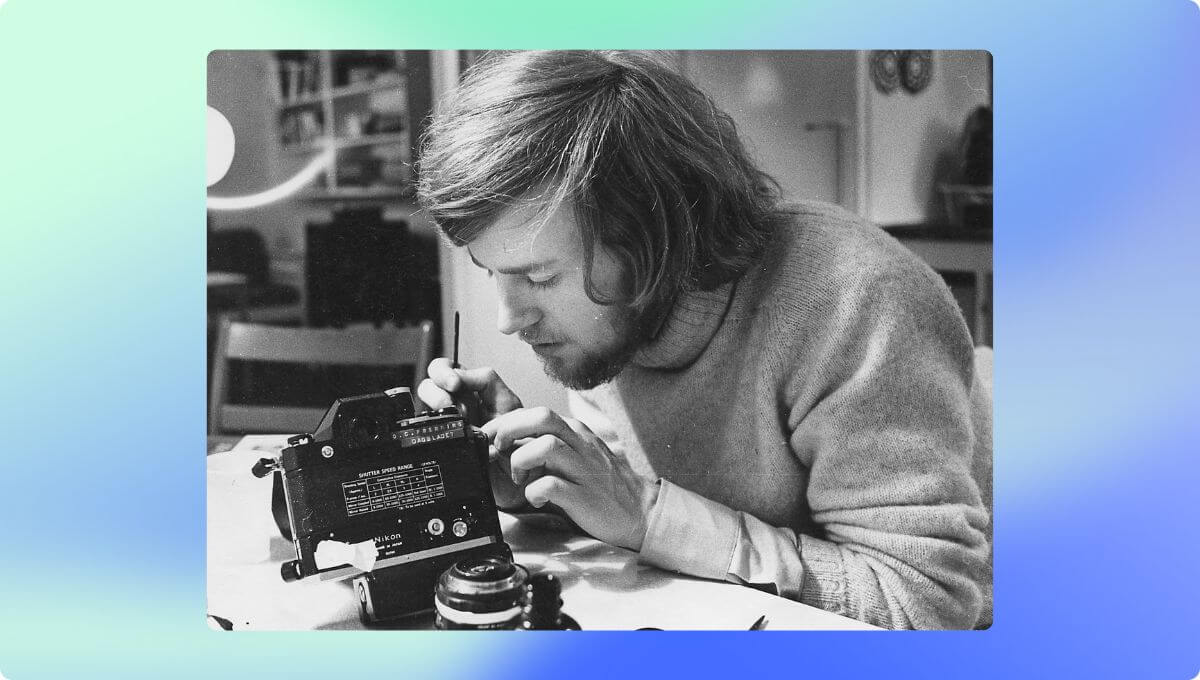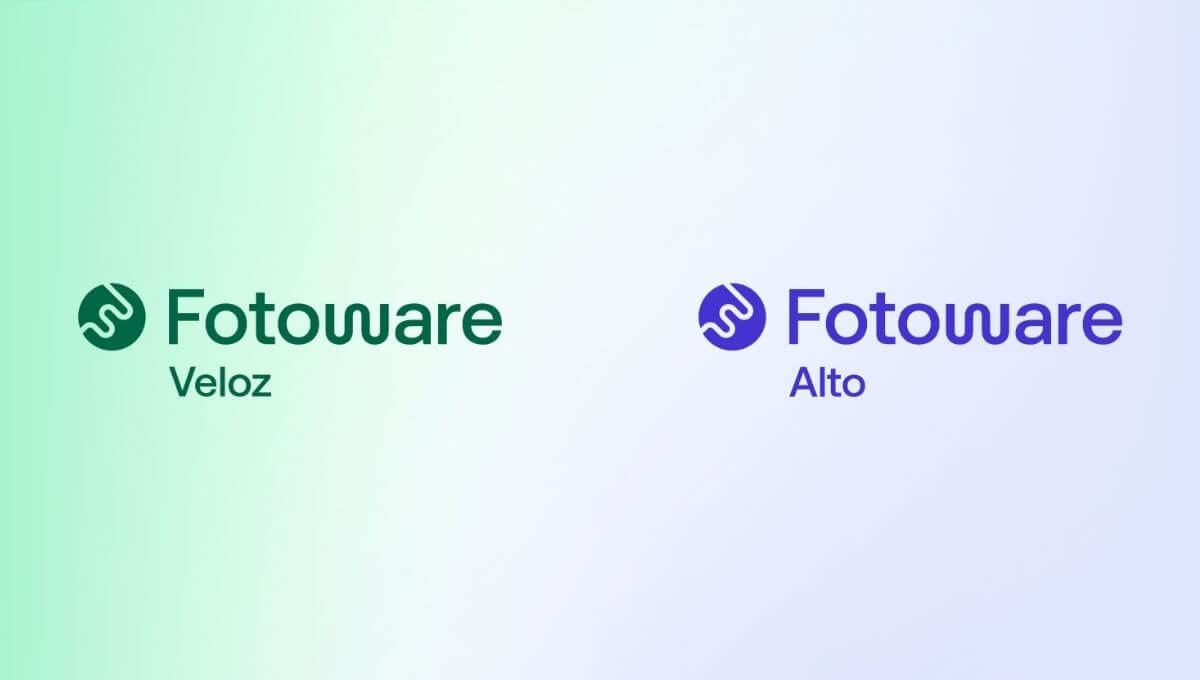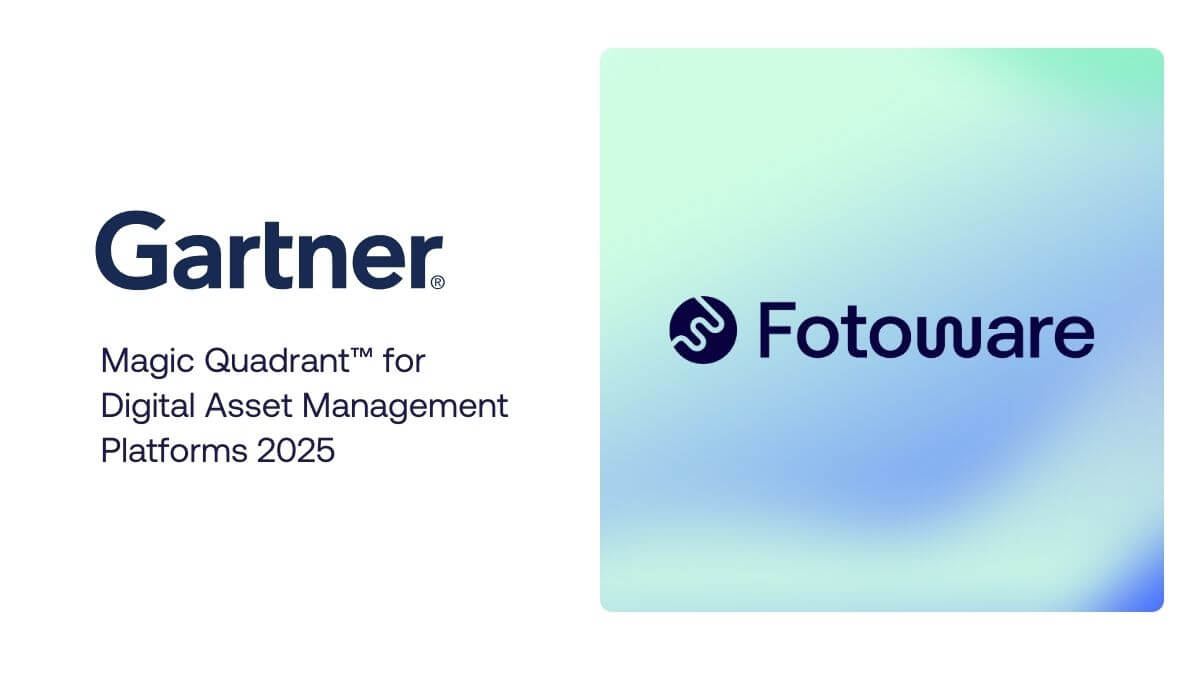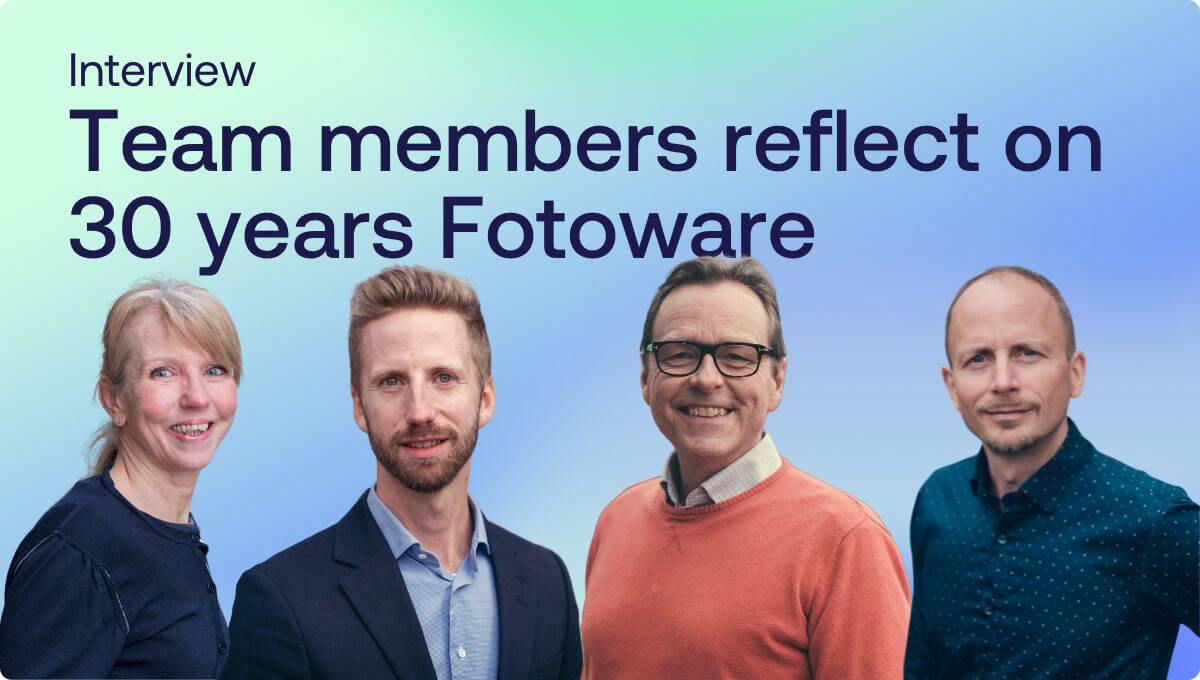
Ole Christian Frenning working on a Nikon camera.
Three decades of driving change - Interview with co-founder Ole Christian Frenning
Fotoware has been pioneering Digital Asset Management from the bold start in Oslo, Norway. Celebrating our 30 years anniversary, co-founder Ole Christian Frenning shares highlights from the journey; a commitment to excellence in innovation, collaboration and customer service.
In this anniversary interview with CEO Anne Gretland, Fotoware’s co-founder Ole Christian Frenning shares insights into the decisions and innovations from his time that fueled success.
Three decades ago, the founders embarked on a mission to simplify complex workflows. Since then, Fotoware has transformed the way organizations worldwide manage their image processing; from the cultural institutions to police forces, national health authorities, global brands, and news agencies— "We had a philosophy that guided us all along: to create the best possible software at the best possible price."
/ole-christian-frenning-anders-bergmann-fotoware.jpg)
Among the first to offer a DAM solution: The birth of Fotoware
Fotoware was founded to optimize and simplify image processing workflows specifically for the newspaper industry.
Founders Ole Christian Frenning, a former photo editor at the Norwegian newspaper Aftenposten, and Anders Bergman, lead developer at Hasselblad, the renowned Swedish camera manufacturer, recognized that converting RGB images to CMYK for print was slow and inconsistent when done manually in Photoshop.
Determined to revolutionize the process, they set out to create a faster, more reliable solution.
Their employers were not ready to invest in better solutions, but the demand for innovation became evident, particularly during events like the 1994 Winter Olympics.
That same year, Frenning and Bergman started the journey which would later become Fotoware. Their goal was to create software that simplified the image processing workflow for newspapers, ensuring more accurate results.
Read more: Fotoware - 30 years of innovation and growth
The first product, Collector, was conceptualized during a lunch meeting in Gothenburg, where they sketched the idea on a napkin. This tool automated the color conversion process and quickly replaced Photoshop in many Norwegian newspapers like Aftenposten, VG, and Dagbladet.
The success of Collector led to the development of FotoStation, a solution designed to handle large volumes of images in newsrooms. As the software's reputation grew, the company’s customer base soon extended to companies of all sizes, marketing departments, and government agencies, solidifying Fotoware’s role as a pioneer in Digital Asset Management.
/deanna-jason-team.jpg)
Pivotal steps and technological development
Fotoware gained a competitive edge by strategically choosing to develop on the Windows platform early on.
"Windows was the only practical choice at the time, as Unix was too complex, costly, and restrictive," says Frenning. The Fotoware team’s philosophy of delivering the best software at the best price helped them outpace competitors. Microsoft's development tools also enabled cross-platform programming, allowing them to create FotoStation for both Mac and Windows simultaneously, something that would have been impossible otherwise for a small team like ours.
Although moving away from Unix was difficult, especially given its strong presence in the newspaper industry, Windows proved to be reliable and continuously improved. Trusting their intuition over analysis, the team found success through pragmatic decisions and a belief that Microsoft's platform would prevail.
A tough 'no' to Sony
Frenning recalls one of the Fotoware team’s toughest decisions—turning down a lucrative offer from Sony. After being flown to Tokyo and treated with exceptional hospitality, Sony asked Fotoware to dedicate their resources to developing drivers for their film scanners in FotoStation.
"We predicted that the scanner had a limited future, as digital cameras were improving rapidly. Committing to Sony would have slowed down the development of the products we believed had long-term potential," Frenning explains.
Despite the prestige and financial appeal, they made the bold decision to decline.
"It was one of the hardest meetings I’ve ever had," says Frenning. Sitting across from such a corporate giant as a small company and saying no was incredibly tough.
Six months later, the decision was validated when film scanners became obsolete. Fotoware stayed on course, glad to have not invested in scanners that would not be worth anything but dust.
— "In the end, it was the right call, and it allowed us to keep innovating in a rapidly evolving industry."
The Kodak collaboration: A missed opportunity
Before other major deals, one significant collaboration was with Kodak, a pioneer in digital camera technology. Kodak developed a unique file format that few could read, but Fotoware gained access and made FotoStation the first software in the world to read Kodak's digital files.
This partnership gave Fotoware exposure at Kodak's large exhibitions, particularly in the U.S., boosting their presence in both the American and European markets.
Despite Kodak’s early lead, their refusal to license sensor technology to other camera makers like Canon ultimately led to their decline. Frenning advised them to focus on licensing rather than competing, but Kodak's rigid leadership persisted.
Frenning’s instincts proved right, ensuring Fotoware pursued long-term success while Kodak faltered.
/nikon-fotoware-fotostation-news.jpg)
Success with Nikon
/fotoware-leadership-team-2024.jpg)
Frenning on Fotoware’s success: Innovation and customer focus
When reflecting on his proudest achievements, Frenning finds it difficult to pick just one.
"We accomplished so much with a small, close-knit team. It’s only in the last few years, after Viking Venture joined, that Fotoware has grown to this current scale," he says.
One highlight he recalls from the early days is the integration of advanced film scanner drivers into FotoStation, a game-changing feature that enabled newspapers to quickly scan entire rolls of film. This innovation was crucial during the shift from analog to digital photography and became widely embraced by the industry.
Looking ahead, he appreciates how Fotoware has developed under Viking Venture’s ownership. "They’ve been able to grow the company in ways we couldn’t with our resources," he says.
/amalie-oystein-presentation.jpg)
When asked about what sets Fotoware apart, Ole Christian Frenning answers their ability to handle large volumes of images for high-demand clients. He points out the importance of engaging directly with customers, ensuring that developers were involved in gathering feedback.
This customer-centric approach not only shaped the development of their products but also built strong, lasting relationships. By consistently delivering innovative, unexpected features, Fotoware didn’t just meet expectations — they exceeded them, creating moments of surprise and delight that helped cement their standing as a market leader.
Read more: 30 years of DAM - Fotoware employees reflect on the journey
/fotoware-30-years.jpg)
Building a strong team and company culture at Fotoware
Ole Christian Frenning attributes Fotoware's success in building a strong team and culture. Both he and Anders Bergman led by example, being open and approachable, which fostered a collaborative and inclusive work environment where the employees could feel ownership of their work. CEO, Anne Gretland has continued and further strengthened this culture.
Read more: Celebrating 30 years of Fotoware’s culture and values
Frenning emphasize the importance of bringing on individuals who are passionate, knowledgeable, and aligned with the company’s goals. This, along with maintaining a culture of trust and transparency, has been crucial to Fotoware’s enduring success and strong internal relationships.
Celebrating 30 Years of Innovation, Collaboration, and Excellence Fotoware’s journey has been remarkable, driven by the dedication of our incredible team.
A heartfelt thank you to our customers and partners who have shaped our story and advanced the field of Digital Asset Management (DAM). Together, let’s continue to innovate, inspire, and elevate our industry!


